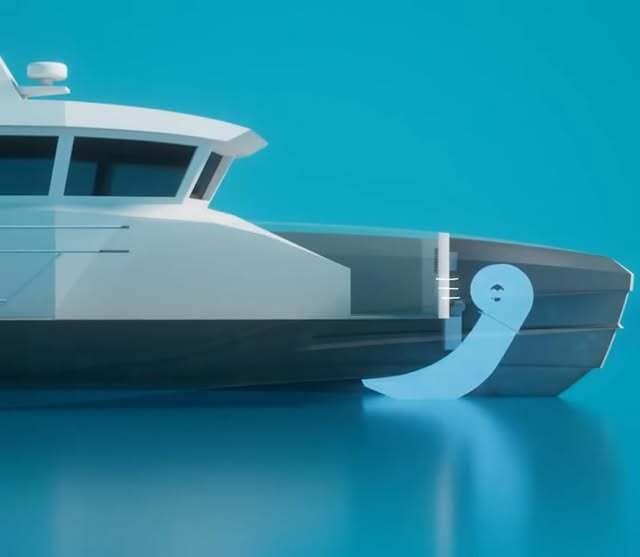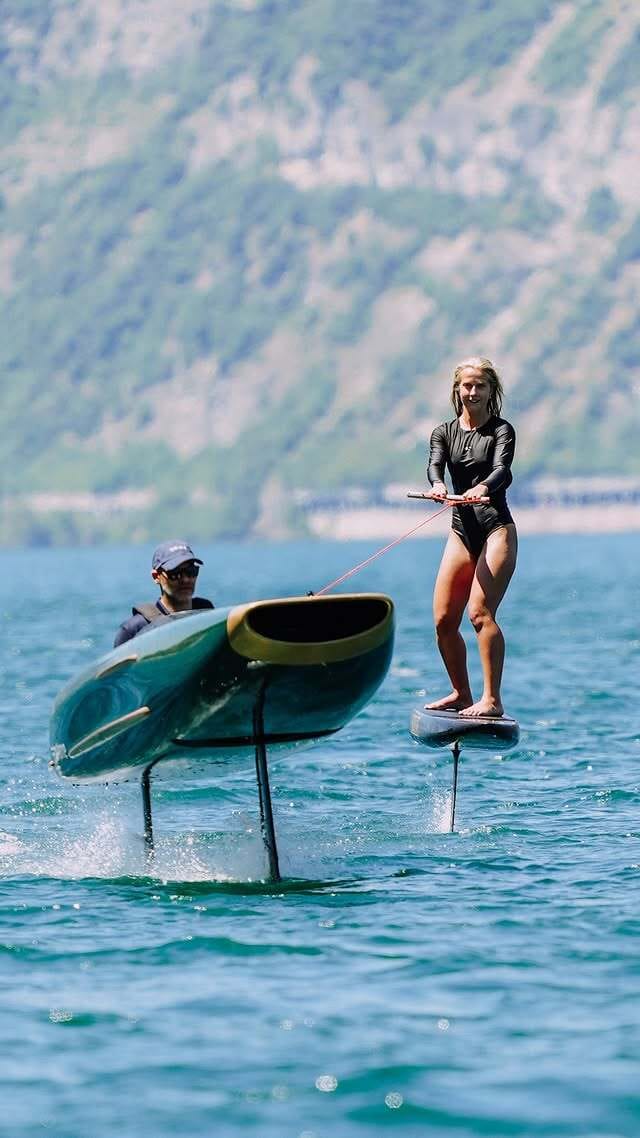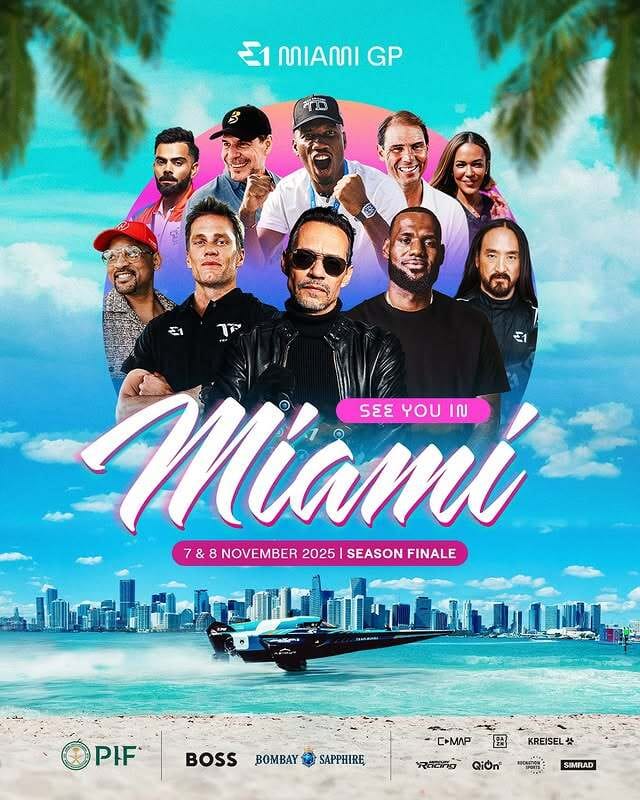- eBoat Newsletter
- Posts
- Lift, Foil, Assist: Three Paths to Faster Electric Boats
Lift, Foil, Assist: Three Paths to Faster Electric Boats
⚡️ Answering the question: Is it time to go electric on the water?
Your weekly newsletter covering the electrification of the marine sector. Issue 108. Not a subscriber? Join here for free.
⚓️ Riding on Air: How SES and “AirHull” Cut Drag for Electric Boats
Air-cushion hulls lift part of a vessel’s weight on a controllable cushion, reducing drag and enabling higher electric speeds at lower power.
Surface-effect ships (SES) and air-cushion catamarans trap pressurized air between sidewalls and flexible skirts. The cushion supports a share of displacement, trimming wetted area and friction. Unlike hovercraft, SES sidewalls keep water inlets submerged, so conventional waterjets remain feasible at sea. The result is a softer ride and better cross-wind tracking than a pure hovercraft. Wikipedia
Two paths are emerging for electric adoption. The first is classic SES for commercial service. Bureau Veritas classed the hybrid-powered CWind Pioneer for wind-farm transfers; operators report improved comfort and more operable days offshore thanks to the cushion’s motion control. That matters for crew transfer vessels, where schedule adherence and deck motions drive project economics.
The second is retrofittable air-assist under planing hulls. Norway’s Pascal Technologies markets “AirHull,” injecting air to create a partial cushion under the running surface. The firm reports up to ~50% lower energy use on planing craft, with the cushion fan drawing about 5–15% of total power depending on speed. Pascal has announced electric projects using AirHull, including workboats and crew boats.
Why it matters for batteries: propulsive energy scales with drag. Cutting skin friction and wave-making penalties lets designers trade battery mass for payload or range, or hold battery size and increase service speed. For high-cycle routes—commuter ferries, crew boats, patrol—the savings compound. For smaller leisure craft, air-assist can open electric planing at practical pack sizes.
There are trade-offs. Cushions add fans, ducts, skirts, and control systems. That raises complexity and can introduce noise paths. Cushion leakage increases with sea state, so benefits depend on conditions. Designers must manage trim, cushion pressure, and skirt wear, while keeping fan power within the mission energy budget.
Still, if your route is flat to moderate and speed targets outstrip conventional displacement options, air-cushion assistance is a credible tool. It pairs well with lightweight composites, efficient waterjets, and modern control loops. Expect to see more hybrid SES and air-assist hulls in pilot service as ports and operators chase higher electric duty factors.
Read the AirHull tech brief, here.
⚙️ Pegasus: A Single-Seat Electric Foiler With Motorcycle-Like Control
Finland’s Foil One Pegasus uses a carbon hull, single-track foils, and Torqeedo batteries to cruise 18–22 knots and top out near 30 knots.
Pegasus is a focused product: one rider, one mission—fast, quiet rides over chop without the drag penalty. The carbon-fiber hull and single-track hydrofoil architecture reduce wetted area; once on foil, current draw drops and range rises. The boat’s published spec lists an electric motor around 14.9–18.8 kW, dual 5 kWh 48-V battery packs, and a top speed of ~30 knots.
Dimensions are compact, aiding transport and storage. Length overall is 4.88 m (16.0 ft) with a beam under 1.0 m (3.3 ft). All-up weight is ~200 kg (441 lb) including batteries; ~128 kg (282 lb) without. The maker quotes “2h+” runtime depending on sea state, rider weight, and cruise speed. Charging from 0–100% is advertised under two hours. Motor Boat & Yachting
The propulsion layout is clean. The drive sits on the aft foil strut; steering is by an in-house system described as motorcycle-like, giving riders intuitive lean-to-turn inputs over a narrow stance. Packaging the batteries fore and aft helps balance pitch on takeoff and foil transitions. Media walk-throughs echo the brand’s handling claims and highlight the minimal wake and low noise at cruise.
Where Pegasus fits: it is not a family runabout or a taxi. It’s a premium solo craft for lakes and protected bays where speed limits and noise rules favor clean operation. For resorts and clubs, the low wake reduces shoreline impact; for owners, there’s less hardware to service than a multi-seat foiler. The flip side is payload and range are rider-dependent, and operations require foil-safe depths and debris-free water.
Compared with e-foils, the control loop is different. A seated posture lowers the center of gravity; the long moment arm between front canard and rear main foil damps pitch changes at speed. For advanced users, the narrow hull allows precise line choice on turns, with stability coming from foil geometry rather than hull beam.
Explore Pegasus specs, here.
🖌️ Arc’s Electric Tug Moves From Pilot to Fleet Plans
Arc is scaling from a truckable pilot tug to an eight-boat, hybrid-electric ship-assist fleet with Curtin Maritime—pairing multi-megawatt batteries with proven harbor specs.
Arc began in leisure craft, but the company is now applying its integrated powertrain to workboats. This spring, Arc and Diversified Marine started retrofitting a 26-ft truckable harbor tug for the Port of Los Angeles, validating hardware, duty cycles, and charging in a compact platform. The project aims to demonstrate zero-emission assist work during typical short-duty harbor shifts.
The larger step came on 2025-09-10, when Curtin Maritime ordered eight hybrid-electric ship-assist tugs powered by Arc systems. Arc says each tug will deliver over 4,000 hp with a ~6 MWh battery and around 60 tonnes of bollard pull. The design leverages Arc’s vertically integrated propulsion stack adapted from its Arc Sport and Arc Coast programs. Deliveries are slated to begin by 2027.
A parallel report from the commercial workboat press outlines build partners and principal dimensions. The first four hulls—built with Snow & Co.—measure 80.9 ft × 42.3 ft with a 12.5 ft draft, twin 2,000-hp L-Drives, and a battery buffer sized at ~6 MWh. Workboat estimates bollard pull at 55 short tons, consistent with the performance Arc targets.
Why it matters for ports is simple: ship-assist tug cycles are short, power-dense, and predictable. Charging can align with crew change and idle windows. The model follows proof points such as Crowley’s all-electric eWolf in San Diego, which entered service to provide ship assist with zero tailpipe emissions. For grid-connected piers, shore power and demand management are part of the package.
Operationally, dispatchers care about torque at zero rpm, dynamic position control, and redundancy. High-capacity batteries feed inverter-driven motors for immediate thrust, while hybrid architecture covers peak events and contingency towage. With propulsion below decks and fewer fluids onboard, maintenance windows can shorten and spills risk declines. The port-side benefit is reduced NOx and PM near fence lines.
If the eight-boat program hits its marks, electric tugs will join shore power and electric yard equipment as the next scalable abatement lever at big-ship terminals. Harbor craft mandates tighten through the decade; early electric assist fleets let operators accumulate emissions credits and real-world reliability data ahead of deadlines.
See Arc’s tug program, here.
⚙️ E1 Series Sets Miami Finale for 2025
All-electric RaceBirds will light up Biscayne Bay on 2025-11-07 to 2025-11-08.
The UIM E1 World Championship brings celebrity-backed, all-electric powerboat racing to Miami this November, capping the 2025 season with a two-day waterfront show.
The E1 Series has confirmed Miami as the 2025 season finale, with qualifying on 2025-11-07 and race day on 2025-11-08 at Miami Marine Stadium—marking the championship’s first North American event. Fans can expect the foiling “RaceBird” electric boats, standardized for parity, competing head-to-head on Biscayne Bay.
Team ownership adds star power: squads linked with Tom Brady, Marc Anthony, and other icons are slated to appear, with Team Miami fronting the host city’s charge. Organizers bill the weekend as a showcase of quiet, high-intensity electric racing paired with accessible fan zones and hospitality.
Why it matters: beyond the spectacle, E1 positions electric propulsion—and its low-wake, low-noise profile—in a marquee U.S. venue. With Miami as the finale, the series aims to broaden awareness of battery-electric performance on water while courting a mainstream audience.
🌊 Weekly News Items
Welcome to this week's electrified marine roundup, capturing the latest in electric boats from racing to eco-friendly ferries.
E1 welcomes Team Monaco, backed by Prince Albert II, for 2026 zero-emission powerboat racing. Link
Lagos launches Omi Eko, Nigeria's first electric ferry, to cut emissions and traffic. Link
UK electric speedboat prototype targets 200mph record in Solent tests. Link
Sialia Yachts partners with Ewake for 100nm-range electric superyacht propulsion. Link
Electric boats market to grow from $4.1B to $9.2B by 2032 at 12.3% CAGR. Link
Torqueedo expands Cruise outboards (2.0-10.0) for small-boat electric conversions. Link
Receive Honest News Today
Join over 4 million Americans who start their day with 1440 – your daily digest for unbiased, fact-centric news. From politics to sports, we cover it all by analyzing over 100 sources. Our concise, 5-minute read lands in your inbox each morning at no cost. Experience news without the noise; let 1440 help you make up your own mind. Sign up now and invite your friends and family to be part of the informed.
If you are finding this newsletter interesting or valuable, please help us by sharing this on social media and/or forwarding the registration link to a friend or colleague.







